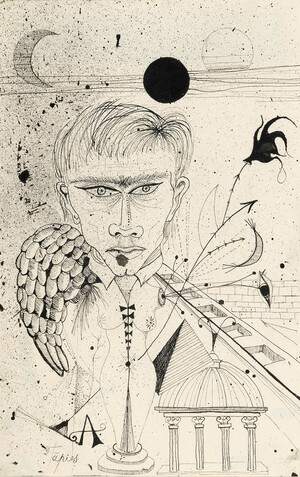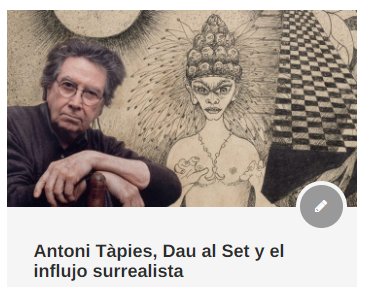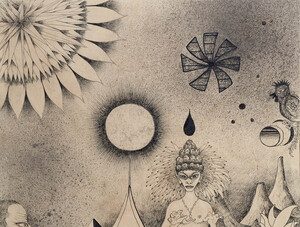Antoni Tàpies, Dau al Set and the surrealist influence
Antoni Tapies stars in our auction on November 16 with one of the unmistakable drawings he made during his assignment to the iconic avant-garde group, Dau al Set. The few occasions in which the more surrealist side of Tàpies breaks into the art market, make the works of this stage one of the most appreciated and sought after by the artist in the sector.
Possibly, Antoni Tapies is one of the most studied and admired contemporary artists in our historiography, achieving unanimous recognition as an essential figure in the development and evolution of the artistic avant-garde in Spain.
With one of the richest and most influential creative trajectories in 20th century art, Tàpies forged his work under the sign of a staunch political and social commitment, where true art, as he himself stated, “must aspire to change the world” .
It was the 1940s when in a Spain subjected by the Franco regime, there was a radical reaction supported under the surrealist orbit against the conservative art that prevailed at that time. Surrealism, which as the last movement of the avant-garde before the civil war, became a powerful symbol of freedom and transgression, spread from the 30s among the restless minorities of Barcelona, thanks, not only to the influence that the movement had had throughout Europe, but also thanks to the great references that were constituted by figures such as Salvador Dalí and Joan Miró.
From this context the germ of the Dau al Set group was born in 1948, where Tapies, together with Modest Cuixart, Joan Ponç, JJ Tharrats, the poet Joan Brossa – a true inspiration for his aesthetics – and Arnau Puig , laid the foundations of the subversive character that de crucially marked his identity .
The prestige it has had and continues to have ‘Dau al Set’ is due, in addition to the height of its representatives, the shock it was for the Spanish art scene. On the other hand, it is also undoubted that the notoriety achieved by Antoni Tàpies has contributed significantly to the unanimous recognition of the group.
As we have previously pointed out, this determining period in Tàpies’ career will be marked by a work that, like the one we are dealing with here, will be dominated by a magicist figurativeism with a surrealist roots linked to the literature of the unconscious . The magnificent ink on paper that we present to you highlights all the elements that defined the Dausatian production of Tàpies, as well as the A determining influence exerted by the work of Paul Klee and Max Ernst in dreamlike and fantastic landscapes that, like this one, will populate with a multitude of objects, creatures and symbols full of suggestive hermetic echoes that already anticipate the mystical charge that will characterize Tàpies’s painting.








